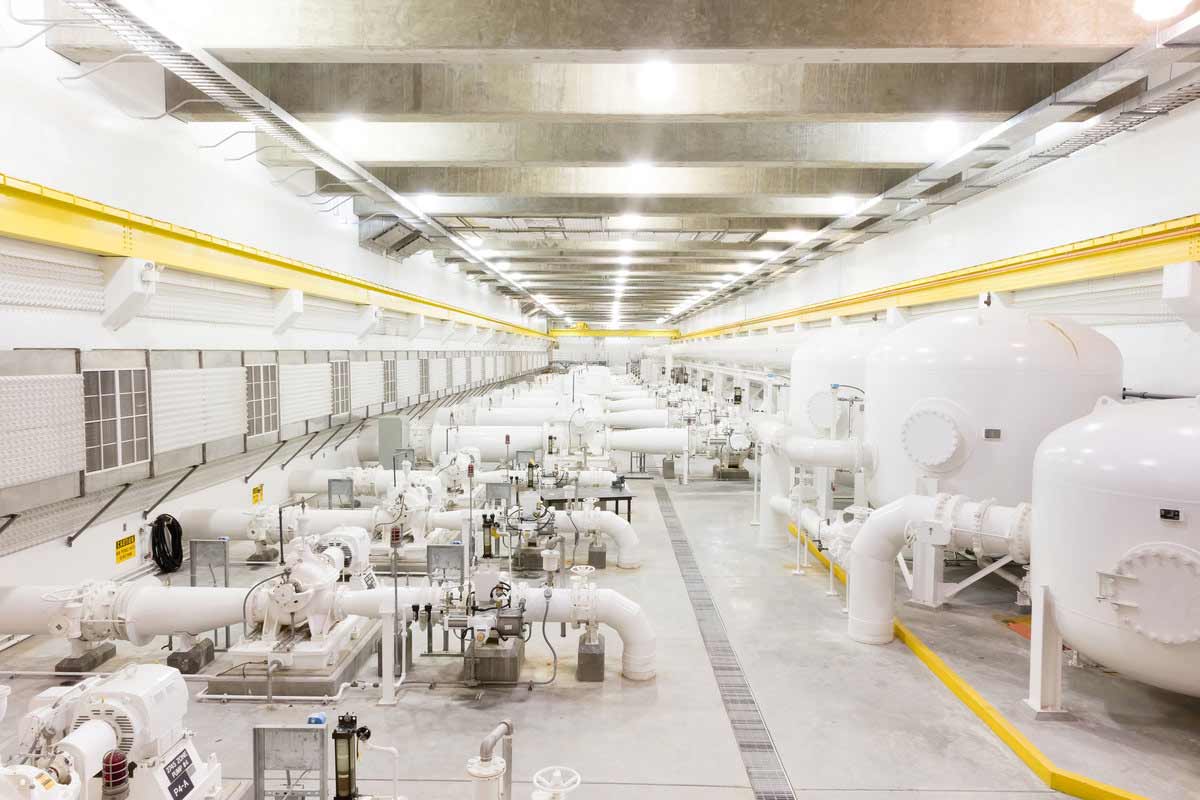


Most people know that the vast majority of Southern Nevada’s water comes from Lake Mead. But what most don’t see is the intricate and elaborate system that brings Colorado River water from the lake to the more than 400,000 homes and businesses across the Las Vegas Valley Water District’s (LVVWD) 300-square-mile service area.
The more than 84 reservoirs, basins and tanks, tucked behind cinderblock walls throughout the valley, collectively store nearly a billion gallons of water across the LVVWD’s service area. This takes advantage of the unique topography of Las Vegas to utilize gravity to deliver water to residents and businesses.
Water from Lake Mead is treated and pumped to these storage reservoirs, in some cases more than 2,000 feet uphill. This is done by 54 pumping stations capable of moving more than 1 million gallons of water per minute through 7,000 miles of pipelines across the valley in an infrastructure serving as the arteries and veins of our community’s water system.
Because gravity feeds water to properties, the location of the drinking water reservoirs is anything but random. LVVWD engineers choose a location based on the elevation and number of customers served. The reservoirs are strategically positioned uphill from customers, allowing gravity to push the water through the water lines and build pressure.
Taking advantage of the Las Vegas Valley’s topography has two key benefits. The first is decoupling water delivery from the community’s electrical grid. Because almost all customers are “gravity fed,” a power outage won’t cause an immediate water service interruption. The second advantage is reduced energy costs, which directly benefit customers.
LVVWD’s water system operators fill reservoirs during “off-peak” hours when electrical costs are at their lowest so that energy use is minimal during times when water use is high. This small operational adjustment yields huge financial dividends to the LVVWD and its customers because water treatment and delivery is the single greatest use of electricity in Southern Nevada and a significant component of the cost of providing water to the valley.
As the valley’s population increases, so does the need for new reservoirs and pumping stations. The LVVWD is currently underway construction on several new reservoir and pumping station projects, including the Rome Reservoir and Pumping Station, which is nearing completion in the northwest valley. With the capacity to store up to 10 million gallons of drinking water, the Rome Reservoir bolsters service reliability for residents and businesses, providing critical redundancy that reduces the risk of large interruptions in water service.
The LVVWD is also working towards completing the two other reservoirs. The 5-million-gallon Centennial Reservoir near Centennial Parkway and Fort Apache Road and the 10-million-gallon Cougar Reservoir near Blue Diamond Road and Hualapai Way will further boost our community’s storage and pumping needs.
The water district invests millions to maintain, upgrade and expand the community’s drinking water system. This investment in the water distribution system keeps long-term costs down. It saves our community many millions of dollars, as proactively taking action to repair and maintain the system is cheaper and less disruptive to residents and businesses than fixing water system failures.
The LVVWD supplies water to more than 1.7 million Southern Nevadans each day, and the district works to protect your water investment 24/7. These projects and other capital improvements across Southern Nevada help ensure safe and dependable drinking water is constantly flowing whenever you turn the tap.
To learn more about how the LVVWD water system works, visit lvvwd.com.
Members of the editorial and news staff of the Las Vegas Review-Journal were not involved in the creation of this content.


